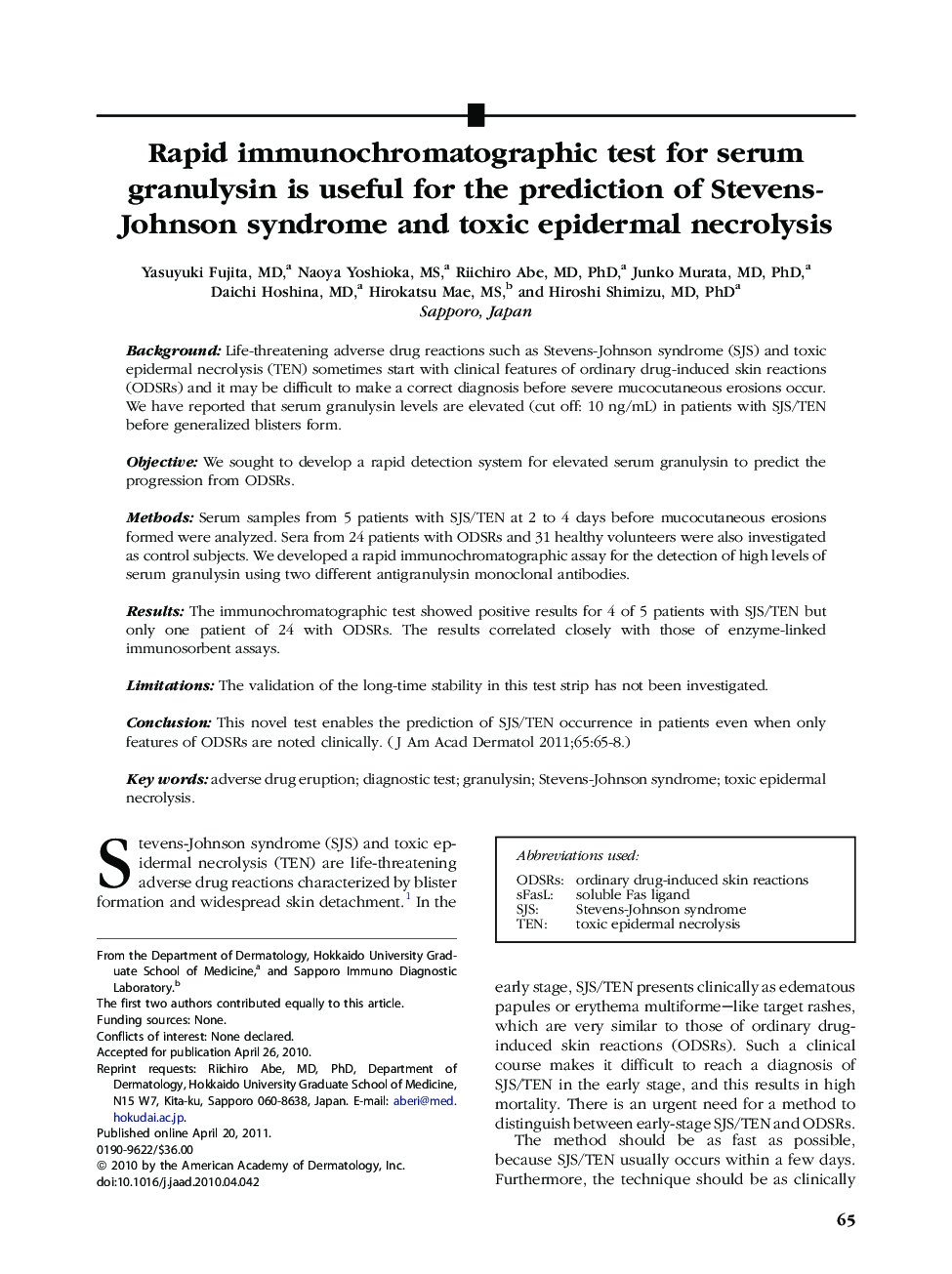| Article ID | Journal | Published Year | Pages | File Type |
|---|---|---|---|---|
| 3206756 | Journal of the American Academy of Dermatology | 2011 | 4 Pages |
BackgroundLife-threatening adverse drug reactions such as Stevens-Johnson syndrome (SJS) and toxic epidermal necrolysis (TEN) sometimes start with clinical features of ordinary drug-induced skin reactions (ODSRs) and it may be difficult to make a correct diagnosis before severe mucocutaneous erosions occur. We have reported that serum granulysin levels are elevated (cut off: 10 ng/mL) in patients with SJS/TEN before generalized blisters form.ObjectiveWe sought to develop a rapid detection system for elevated serum granulysin to predict the progression from ODSRs.MethodsSerum samples from 5 patients with SJS/TEN at 2 to 4 days before mucocutaneous erosions formed were analyzed. Sera from 24 patients with ODSRs and 31 healthy volunteers were also investigated as control subjects. We developed a rapid immunochromatographic assay for the detection of high levels of serum granulysin using two different antigranulysin monoclonal antibodies.ResultsThe immunochromatographic test showed positive results for 4 of 5 patients with SJS/TEN but only one patient of 24 with ODSRs. The results correlated closely with those of enzyme-linked immunosorbent assays.LimitationsThe validation of the long-time stability in this test strip has not been investigated.ConclusionThis novel test enables the prediction of SJS/TEN occurrence in patients even when only features of ODSRs are noted clinically.
